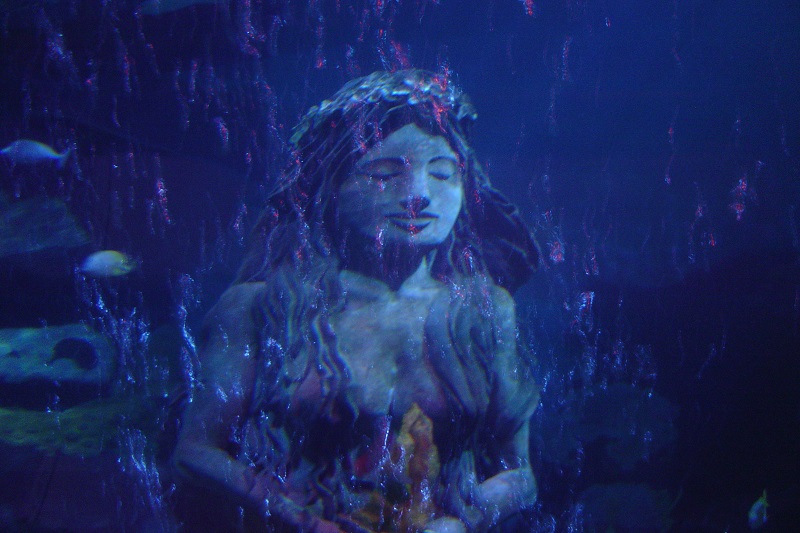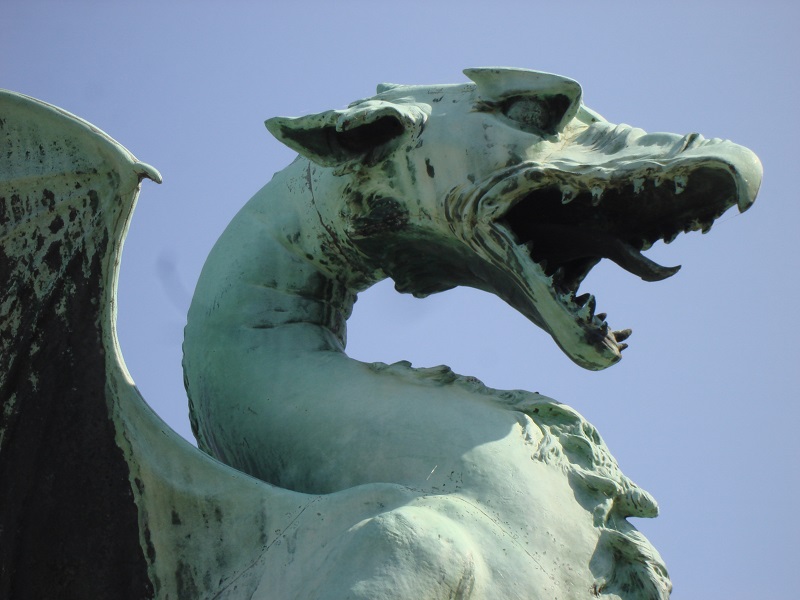Strange Creatures of the British Isles
A look at the creatures of British folklore
The folklore of the British Isles is rich with tales of strange, mythical monsters. Black dogs haunt lonely roads ready to ambush the unwary traveller; fairy folk are ever-present in the fairytales to which they give their name; fire-breathing monsters are preserved on a flag and carved onto buildings in our cities. These remnants of our pagan past provide a link from distant times reaching into our present.
Although most people would agree that these creatures are a fictional product of human imagination, this does not mean they can be dismissed as unimportant. Each beast shines a light into the human mind illuminating and revealing a part of ourselves that we might prefer to remain hidden. By looking at the mythology woven around these creatures you can delve deep into the human psyche revealing the hopes and fears that are as relevant now as when these creatures were first brought to life.

Mermaid: This water creature is usually portrayed as a seductive female with a scaly fish tail instead of legs. The mermaid features in folktales from around the world, with plenty of those set in the murky waters off the coast of Britain, especially in the fishing communities of Cornwall, coastal Scotland and west Wales. Interestingly most descriptions of the mermaid are markedly similar. Usually female, this sexy siren can be a symbol of good or ill. In some stories she guides sailors away from the deadly rocks that could wreck their boat; other versions say the mermaid brings disaster to those who catch sight of her. While another legend says that the mermaid lulls sailors to sleep with her sweet singing so she can carry them away to her watery lair. Some tales tell of mermaids marrying mortal men and being transformed into a mortal woman - thus gaining a soul, which mermaids are said to lack.
Meaning: Mermaids perhaps reflect the wildness and danger of the element of water. Many fishermen and sailors would lose their lives at sea - these beautiful creatures were a way of explaining disappearances at sea. Mermaids are also a symbol of female sexuality freed from the constraints of society. Mermaids are depicted as powerfully in control of the men they cross paths with - perhaps reflecting a deep societal fear of the power women can sometimes exert over men.
Black Dogs: A frightening portent of doom, black dogs haunt the fireside tales of British mythology. Supposedly lingering on lonely country roads, the black dog is a supernatural canine that spells death and disaster for those to whom it appears. One of the most famous black dog stories is Arthur Conan Doyle's Hound of the Baskervilles set on Dartmoor in south west England.
Meaning: This dark symbolism taps into our deepest fears about being caught off guard and alone by a force that cannot be explained by reason. Dogs have traditionally been associated with death - the Egyptian canine-headed god Anubis is associated with the afterlife, while the snarling Cerberus, a three-headed dog, guards the entrance to the underworld in Greek myth.
Fairies: The little people are one of the most enduring mythological creatures of British folklore. These elemental beings are part of the fabric of nature with magical powers to help or hinder humans. Fairies include: brownies, imps, sprites, gnomes, goblins, elves and many more.
Meaning: It is possible that the idea of fairies came from the successive invaders of Britain who saw the indigenous people as somehow having a magical connection to nature as if they were melded to the land. This could be because the native people, although weaker than the invaders in terms of battlefield prowess, had superior abilities to use the landscape to hide, then appear as if from nowhere, leading invaders to think of them as magical creatures.

Dragons: From the fierce red dragon that emblazons the flag of Wales to the carved images of dragons that can be found on many old buildings around the country, such as Norwich, dragons have always had a place in British folklore. The patron saint of England, Saint George, won his place in history by defeating a dragon. While the Loch Ness Monster, often depicted as a prehistoric creature, is one of the world's best-known strange beasts.
Meaning: Dragons represent the frightening and untameable forces of nature. We can no more hope to control nature than we could hope to control a fire-breathing enormous monster that can fly through the air. Dragons are a mythological reminder that forces exist in the world that we can never contain. Humankind is not the centre of the world - merely a part of it.
Green Man: This is a nature spirit whose head adorns churches and secular buildings alike. He is depicted as a large man whose body is made from wood and leaves, often with foliage sprouting from his mouth. He is hung on doors to bring good fortune to the household. Like many pagan gods he is neither essentially benign or malignant - he simply exists. He can be a force for good but also has a dark side - like all of nature.
Meaning: He is the ancient pagan spirit of Britain itself, ruler of our green and pleasant land. The new religion of Christianity could not supplant him but instead incorporated his image onto their buildings where he stands guard to this day.
Submit A Comment
Create a Psychic Sofa account today!
Join the Psychic Sofa Community Today and get access to:
- Get notified by (FREE) SMS text when a reader becomes available!
- Latest offers and members only exclusives
- Add favourite readers to your profile




Comments
No comments have been made yet